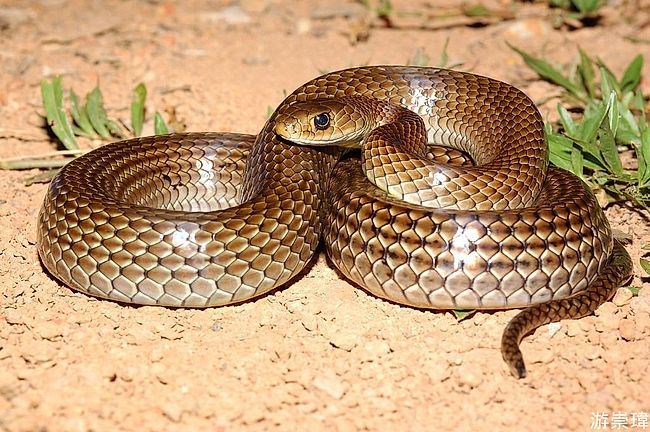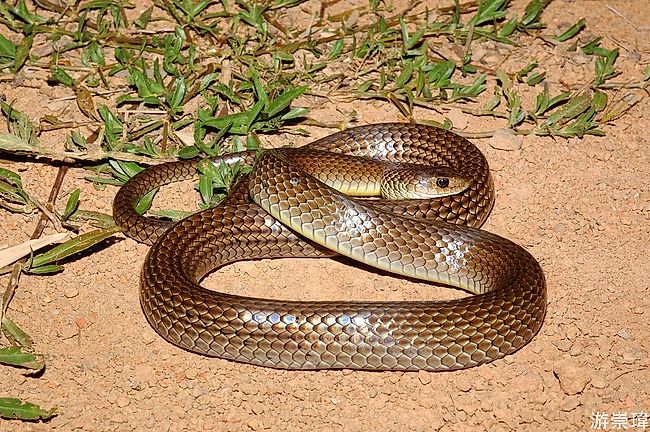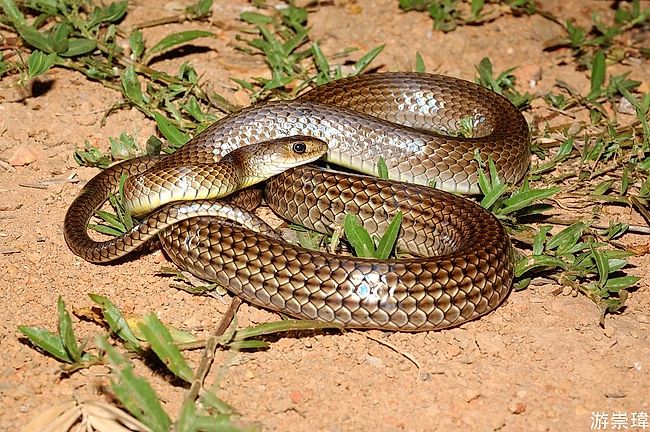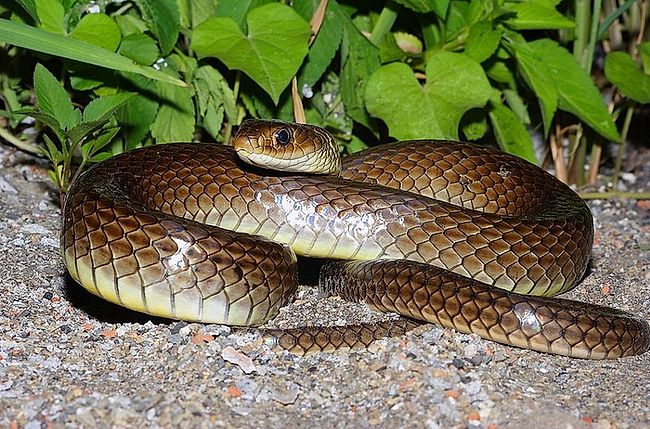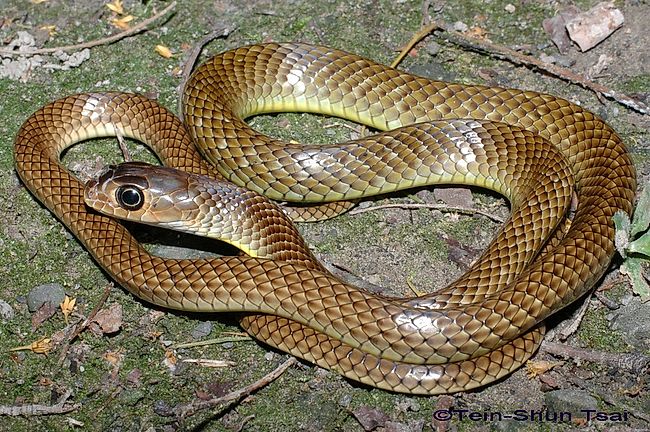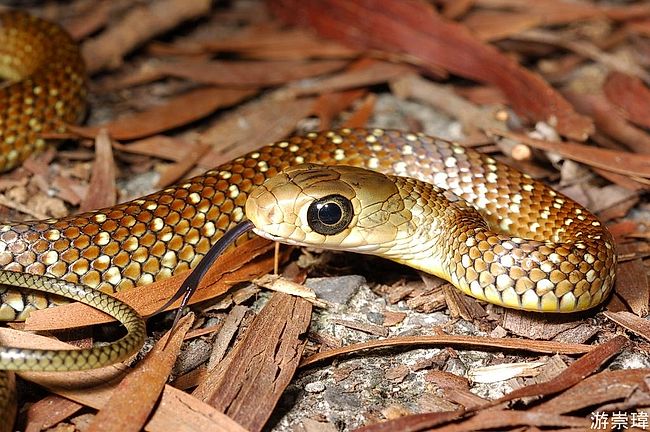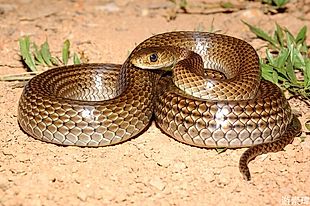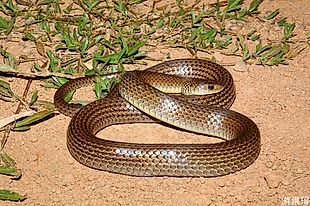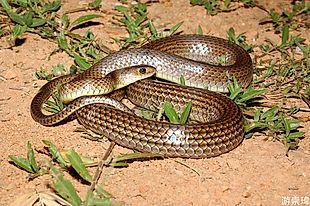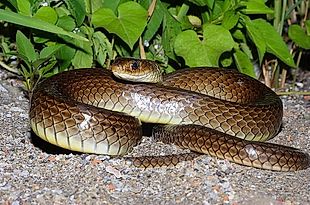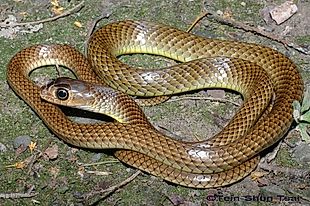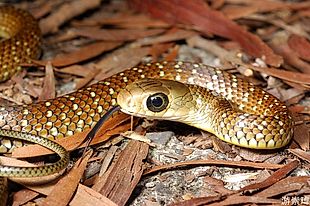Ptyas korros
Chinese Ratsnake
細 紋南蛇 (xi4wen2nan2she2)
Status: Not Protected
Non-venomous
Videos
Family
Colubridae, subfamily Colubrinae
Max. length
200 cm
Occurrence in Taiwan
Throughout Taiwan, up to 1000 m altitude. Less common in the North. Rare.
Global Distribution
India (Assam, Arunachal Pradesh), Bangladesh, Indonesia (Sumatra, Borneo, Java, Bali), Laos, Thailand, Vietnam, West Malaysia, Singapore Island, Myanmar, Cambodia, South China (Zhejiang, Jiangxi, Fujian, Guangdong, Guangxi, Hainan, Hunan, Yunnan, Guizhou, Anhui), Taiwan.
Description
Large snake; total length up to 200 cm. There are 11-17 rows of scales, which are smooth or feebly keeled posteriorly. Head is narrow, oval to slightly triangular; body is slender and tail is long. Eye is large; iris is dirty yellow to brown, heavily dappled or mottled with coarse black pigment and pupil is round, jet black, surrounded by narrow ring of dirty yellow. There are 2-4 loreals and a moderate rounded ridge from upper eye to nostril at each side. Tongue is large, with a dark gray to blue-black stem. Upper head is uniform dark olive brown and the sides are lighter in color; the labials are not black-edged. Upper body and tail are uniform dark olive to gray brown, with dark-edged scales mainly posteriorly resembling a net pattern. There are about 9 indistinct or grey longitudinal stripes along body. Juveniles have transverse rows of white spots across body anteriorly. Ventral head is creamy white to yellow. Ventral body is variable, usually yellow in neck region and anterior fifth to quarter of body, gradually merging with lighter yellow or dirty white posteriorly. Anal scale is divided and subcaudals are paired.
Biology & Ecology
This semiarboreal, cathemeral (diurnal or nocturnal) snake inhabits the ground or trees in forests and farmland, and may appear near human residences. It preys on frogs, lizards, snakes, birds, eggs, and small mammals. Females produce 8-12 eggs per clutch in May and June; hatchlings measure about 26 cm in total length. This snake may be fairly nervous when captured and may whip about and thrash its body violently in an attempt to escape from its captor, but may be handled with little danger of biting after a few days.
It can be identified by its relatively large eyes, the olive-colored tail with dark-edged
scales, and the faint pale brown banding which occurs on the thickest part of the body
(though this feature does not occur in mature adults). (Source)
Etymology
Ptyas is Ancient Greek for a kind of serpent said to spit venom into the eyes of men;
korros: according to Stejneger (1907), korros is a Javan word for a snake supposed to be Coluber melanurus
(that name has a tortured history, but is likely a species of Coelognathus), and Schlegel, in
naming Coluber korros (now Ptyas korros), misapplied the name.
The Chinese name 細紋南蛇 (xi4wen2nan2she2) literally means "fine-striped
(細紋) Ptyas mucosus (南蛇, aka Dhaman Ratsnake)"; as this species resembles P. mucosa,
but has a slender body and thinner, almost faint stripes.
Further Info






